Reclaimed Hardscapes
Reclaimed Stone Posts
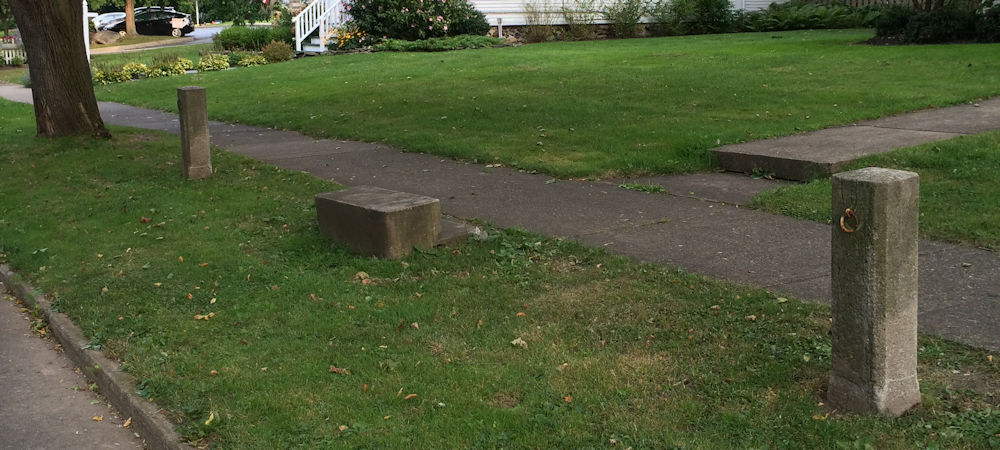
Stone steps and hitching posts made exiting a carriage and tying up the team easy work. (more pictures)
Reclaimed, Used Stone Posts
Throughout history, stone posts have been used as fence posts, hitching posts and property markers—and we reclaim them all. Historic stone posts are unique pieces that come in a variety of sizes and materials.
Before motor vehicles crammed our highways, you would have used a hitching post to secure the horses that pulled your carriage. Often, hitching posts came in a matching set, with a set of steps in between to help passengers exit their carriages safely.
Our inventory changes frequently, so if you’re looking for something specific, contact us and we’ll work with you to find the right color, era and character to suit your project. If we don’t have the posts you need in stock, we will search for them to reclaim or can sometimes fabricate them from reclaimed stone slabs.
To discover more about the history of our reclaimed street pavers, visit the History section below.
View Gallery Product History Request Pricing
View Reclaimed Stone Posts in Action!
-
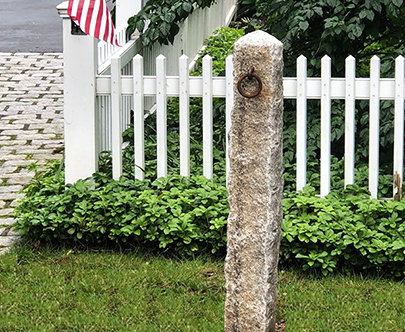 VIEW LARGER
VIEW LARGERStone Posts
This antique hithcing post is wonderfully placed to highlight the surrounding landscape and picket fence. -
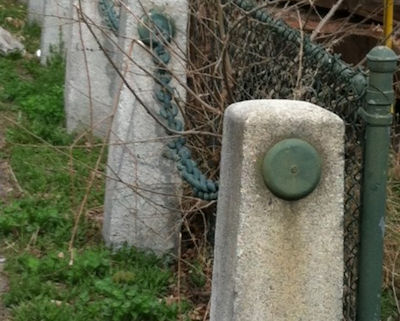 VIEW LARGER
VIEW LARGERStone Posts
Granite posts with chain strung between them defined the edge of a cathedral driveway -
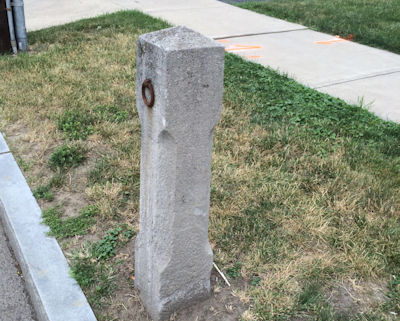 VIEW LARGER
VIEW LARGERStone Posts
Some antique stone hitching posts are simplistic in design -
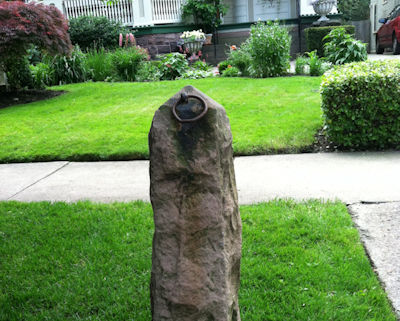 VIEW LARGER
VIEW LARGERStone Posts
Some old stone hitching post were rustic -
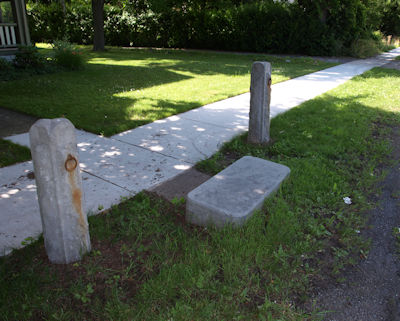 VIEW LARGER
VIEW LARGERStone Posts
Elegant homes provided the convenience of curbside carriage steps and hitching posts -
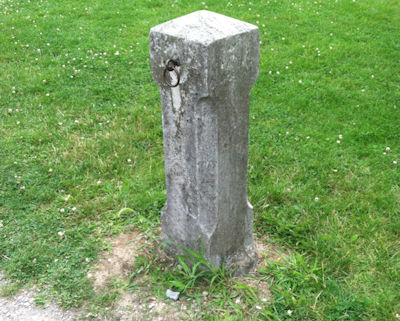 VIEW LARGER
VIEW LARGERStone Posts
The patina on this post belies its age -
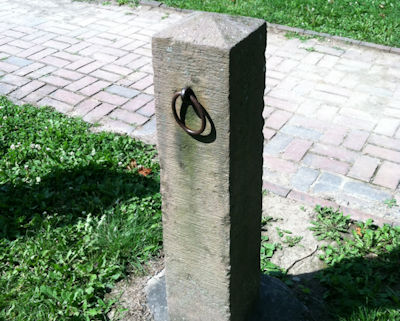 VIEW LARGER
VIEW LARGERStone Posts
The masons tool marks are still visible on this reclaimed stone post -
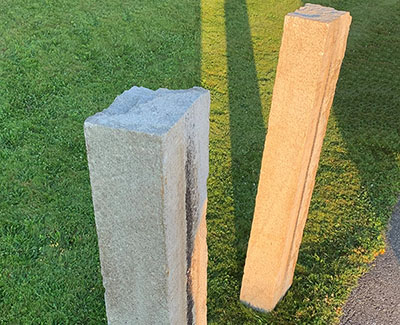 VIEW LARGER
VIEW LARGERStone Posts
The patina on these square granite stone posts make them a great addition to a historic property looking for old stone with character. -
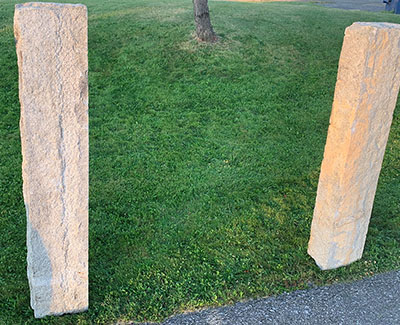 VIEW LARGER
VIEW LARGERStone Posts
Square granite stone posts for gate posts, hitching posts or property markers. Size is ~ 8in x 8in x 5ft high -
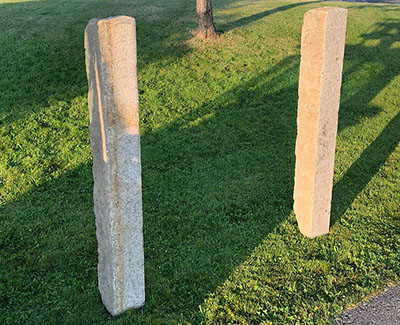 VIEW LARGER
VIEW LARGERStone Posts
Historic, reclaimed granite curb make great 5 foot high stone posts for your next project. -
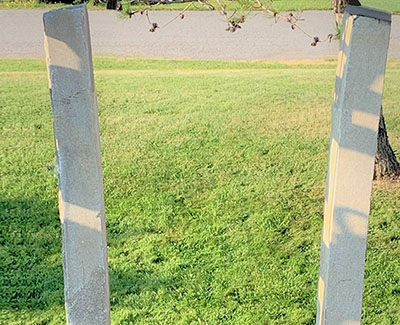 VIEW LARGER
VIEW LARGERStone Posts
This 8in x 8in radius granite curb is a one-of-a-kind addition to a property as gate posts or property markers. Note the curved stone at the tops! -
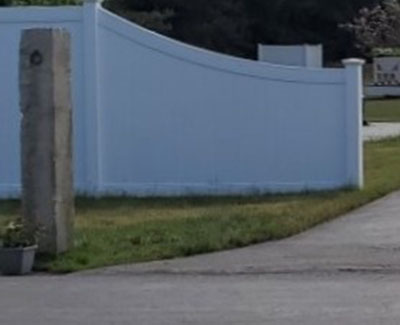 VIEW LARGER
VIEW LARGERStone Posts
Driveway hitching posts installed using antique 8in x 8in square granite stone.
Historical Snapshot: Stone Posts History
Historically, stone posts had a variety of uses, most notably as hitching posts, property markers and fence posts.
Hitching posts—or places to tether horses pulling a carriage—frequently came in matched sets with a set of carriage steps between them. Sometimes known as upping stones, the steps allowed passengers to exit their carriage safely and easily. These relics of our horse-drawn heritage can still be seen in some historic cities—like New Orleans, Houston and Annapolis, Maryland—and are available in our reclaimed inventory for your next project.
You’ll also find property markers in our inventory of salvaged products. When used as property markers, stone posts proudly displayed the surveyor’s mark, family name or the name of an old company or rail line.
Lastly, stone posts were employed as fence posts because, for farmers, purchasing quarried stone for this purpose was relatively inexpensive. The rock was quarried and moved to the site, where craftsmen split the stone using traditional methods and sometimes finished them with an intricate design. They then set the posts into the ground about 10 steps apart.
Between the posts, landowners used barbed wire, which was first patented in the U.S. in 1867 and gained great popularity in the 1870s as inexpensive agricultural fencing, particularly for livestock.
Several methods were used to attach the wire to the post. The most common was to lay the wire flat against the post and wrap a smoother wire tightly around it to hold it in place. Notches cut in the posts’ edges prevented the wire from sliding. Another less common method involved drilling a hole into the post, inserting a peg into the hole and securing the wire to the peg.